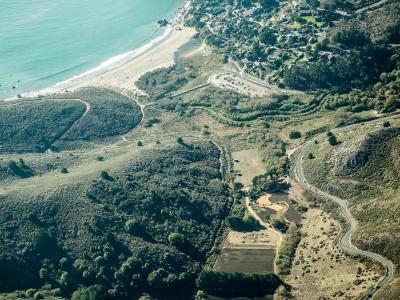Redwood Creek and Muir Beach Restoration Projects
Tour Coordinators:
Carolyn Shoulders, Golden Gate National Recreation Area
Michael Reichmuth, Point Reyes National Seashore
Mike Jensen, Prunuske Chatham, Inc.
Tour Overview
A series of actions were implemented by the National Park Service on Redwood Creek over a 5-year period to restore natural geomorphic function to the last 1/2 mile of channel to the ocean. The natural channel processes, such as floodplain connectivity, off-channel features, and in-channel wood were designed to provide suitable habitat for the endangered coho salmon and threatened steelhead. Monitoring of salmonids within the restoration area is underway to evaluate whether the habitat has been effectively created and whether it is being used by coho. The lower Redwood Creek Restoration provides an example of both the succession of restoration projects over time and the creation of complex habitat features in a dynamic system.
In fall of 2014, Green Gulch Farm and Prunuske Chatham, Inc. converted a straightened, concrete controlled reach of Green Gulch Creek, the lowest tributary to Redwood Creek, into a natural meandering stream with created floodplains. The intention of the project is to increase the resiliency of the Redwood Creek system by creating additional salmonid rearing habitat, restoring 1.5 acres of wetland/riparian habitat, and integrating the creek into the daily experience of the organic farm. Vegetated floodplains and slow-water alcoves filled with large wood provide high-quality shelter habitat. To enhance habitat complexity and temporarily stabilize banks until the vegetation is established, rootwad structures, log vanes, and brush mattresses were installed on outside bends. Salvage wood as added for pool complexity and live wood was incorporated into the structures to jump-start root establishment. Over 3000 sedge and rush plugs, and woody and herbaceous plants will be installed to create a continuous upland, wetland, and riparian forest complex.

